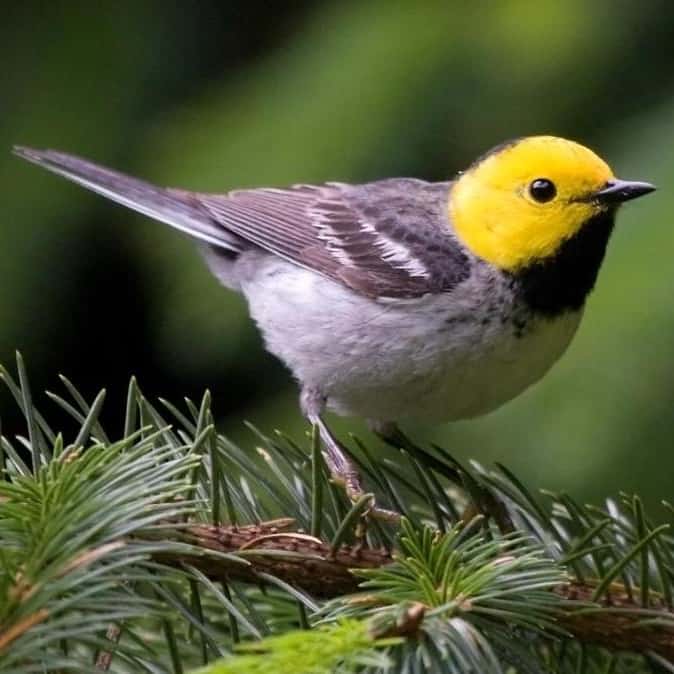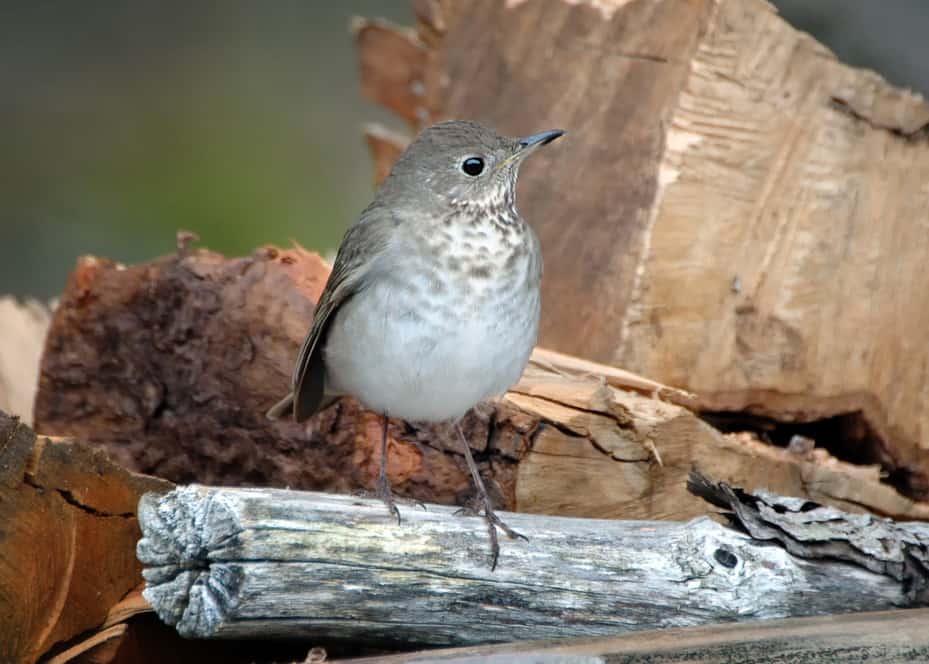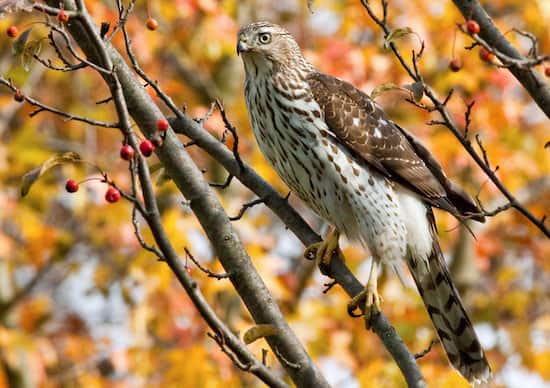Look For
The hermit warbler is a small songbird with a bright yellow head. The breeding male has a black nape that extends up onto the crown to various minor degrees. Its chin, throat, and upper chest are black and underparts are white. Its upperparts are a dark gray with black streaks and it has two thick, white wing bars. The female hermit warbler is typically a duller version of the male. It has less black on its throat and nape and a duller facemask. The Hermit warbler is closely related to the Townsend’s warbler and the two often interbreed.
Listen For
The hermit warbler’s song is a series of buzzy, whistled notes that quickly rise and fall in pitch without much structure. The song can also sound more rhythmic with a series of consistent high notes finishing with a few lower notes. Its call is a sharp chip.
Find It
The hermit warbler is a small songbird that breeds in most parts of the Pacific Coast from California up through Oregon and Washington as well as along the Sierra Nevada. It prefers to inhabit dense, moist, coniferous forests, particularly favoring fir, hemlock and cedar trees along the coast or in mountainous regions. It spends the winters in southern California and down into Central America as far south as Panama.
Feeding Behavior
The diet of the hermit warbler is primarily insects, including caterpillars, beetles, and spiders. It forages at the top of very tall trees, gleaning insects from twigs at the middle and outer parts of branches. It also hovers and flies out to catch insects midair and hangs upside down on branch tips as it probes among leaves.
Nesting Behavior
The hermit warbler builds its nest on a tree branch about 20 to 40 feet above the ground. The female builds a compact open cup shape made of twigs, moss, pine needles, and bark, webs lined with feathers and hair.
The female lays 4 to 5 eggs that are a creamy white with brown speckles circling at the larger end. Both parents incubate the eggs for around 12 days before hatching. The female, and possibly the male, feed the young before they leave the nest after 8 to 10 days.




